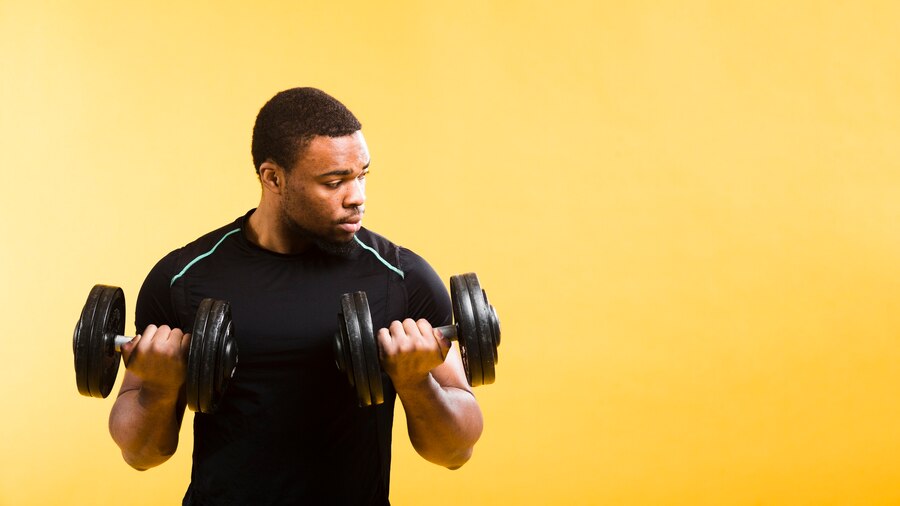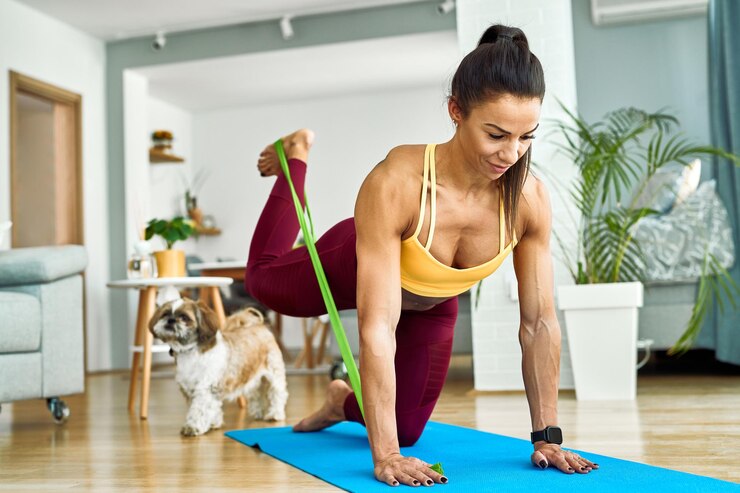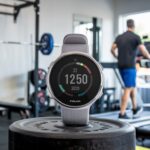As a fitness enthusiast with over 25 years of experience reviewing, testing, and recommending exercise equipment and routines, I’ve encountered countless individuals seeking alternatives to the high-to-low cable fly. Whether you lack access to a cable machine, prefer free weight training, or crave exercise variety, this guide unveils effective alternatives that sculpt your chest just as effectively.
Target Muscles and Exercise Mechanics of High to Low Cable Fly.
Before diving into alternatives, let’s revisit the high-to-low cable fly’s mechanics and target muscles. This exercise primarily engages your pectoralis major, the large chest muscle responsible for pushing movements.
The high-to-low variation emphasizes the upper chest fibers, creating that coveted definition. The movement involves bringing the cables down and across your body in a controlled arc, mimicking a hug. You need to another article I wrote about >>>>> Unplugging and Powering Up: Unleashing Your Pecs with Dumbbell Fly Alternatives to learn more.
Top Alternatives to High to Low Cable Fly:
Embrace the Machine:
- Pec Deck Machine: This chest-focused machine isolates the pecs similarly to the cable fly. Adjust the handles for incline or decline variations, targeting different chest areas.
Pros: Easy to set up, beginner-friendly, controlled movement.
Cons: Limited range of motion, might not activate stabilizer muscles as effectively as free weights.
- Chest Press Machine: While not an exact replica, the chest press machine offers a compound movement engaging chest, shoulders, and triceps. Play with incline, decline, and grip width variations for a well-rounded workout.
Pros: Versatile, builds overall upper body strength, good for beginners and advanced lifters.
Cons: Less emphasis on pure chest isolation compared to the cable fly or pec deck.
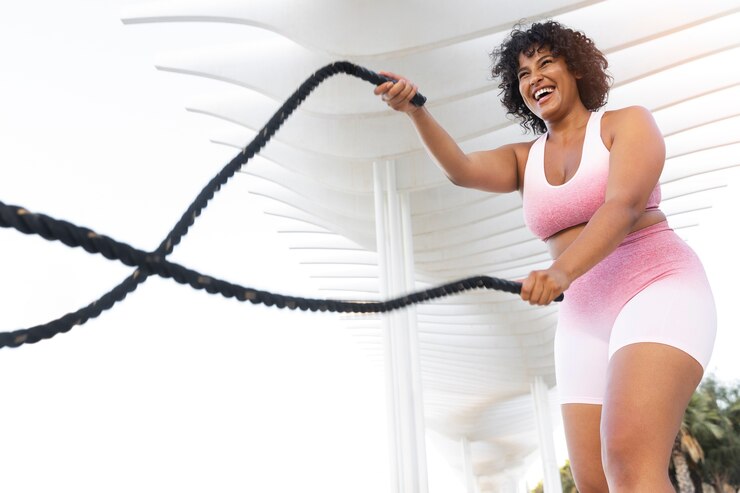
Free Weights for Freedom:
- Dumbbell Fly Variations: The king of chest fly alternatives, dumbbells offer incredible versatility. Perform flat dumbbell flyes for overall chest development, incline flyes for upper chest focus, and decline flyes for lower chest emphasis.
Pros: Excellent range of motion, activates stabilizer muscles, allows for progressive overload.
Cons: Requires more coordination and balance than machines, which might be challenging for beginners.
- TRX Chest Fly: This bodyweight exercise utilizes suspension trainers to mimic the cable fly movement. Adjust the angle of your body to target different chest areas.
Pros: Portable, core-engaging, great for travel or home workouts.
Cons: Requires some upper body strength and coordination, might not offer the same resistance as weights.
- Push-Ups with Variations: The humble push-up, a bodyweight classic, can be a surprisingly effective chest builder. Elevate your feet on a bench for incline push-ups targeting the upper chest, or try decline push-ups with your feet on a stability ball for lower chest focus.
Pros: Accessible, requires no equipment, modifiable for different fitness levels.
Cons: Might not be suitable for beginners with limited upper body strength.
Bodyweight Bliss:
- Decline Push-Ups: Take your push-ups to the next level by placing your feet on an elevated platform. This increases the difficulty and targets the lower chest muscles more intensely.
Pros: Bodyweight convenience, excellent lower chest activation.
Cons: Requires upper body strength and shoulder mobility.
- Dips with Modifications: Dips are another compound exercise that strengthens chest, triceps, and shoulders. Modify them using parallel bars or a dip station, or even use a chair or bench for assisted dips if needed.
Pros: Builds upper body strength and stability, good for advanced lifters.
Cons: Can be challenging for beginners or those with shoulder issues.

Remember, this is just a starting point. Explore different alternatives, experiment with variations, and find what works best for your body and fitness goals.
Stay tuned for the next section, where we’ll delve into choosing the right alternative for you and incorporating it into your workout routine!
Choosing the Right Alternative for You: Your Personalized Chest Sculpting Plan.
As a fitness professional, I understand that a one-size-fits-all approach rarely works. Choosing the best high-to-low cable fly alternative depends on several factors:
1. Fitness Level:
- Beginner: Start with machine options like the pec deck or chest press for controlled movements and easier learning. Bodyweight exercises like decline push-ups or assisted dips can also be good starting points.
- Intermediate: Graduate to free weights like dumbbells for more exercise freedom and muscle activation. Explore TRX chest flyes or advanced push-up variations for a challenge.
- Advanced: Push your limits with weighted dips, decline dumbbell flyes, or even one-arm push-ups for maximum chest development.
2. Equipment Availability:
- Gym: Take advantage of the diverse machines and free weights available. Experiment with different options to find your favorites.
- Home Gym: Invest in adjustable dumbbells, resistance bands, or a TRX system for versatile workouts. Bodyweight exercises are always an option.
- Limited Equipment: Don’t underestimate the power of body weight! Push-ups, dips, and wall variations can provide a surprisingly effective chest workout.

3. Personal Preference:
- Do you enjoy the controlled feel of machines? Stick with the pec deck or chest press.
- Crave the freedom of movement with free weights? Embrace dumbbells or TRX exercises.
- Love a good bodyweight challenge? Push-ups and dips are your friends.
Matching Alternatives to Specific Goals:
Remember, different exercises excel in different areas:
- Strength: Weighted dips, decline dumbbell flyes, chest press variations.
- Hypertrophy (muscle growth): Progressive overload with dumbbells, TRX flyes with added resistance bands.
- Definition: Isometric holds at the peak of push-ups or dips, high-rep dumbbell flyes.
I encourage you to experiment and find the exercises that align with your fitness level, equipment access, and personal preferences. Remember, consistency is key, so choose options you enjoy and can stick with over time.
In the next section, we’ll explore how to seamlessly integrate these alternatives into your workout routine for a sculpted, sculpted chest!
Programming Alternatives into Your Workout Routine: Sculpt, Don’t Skip!
Now that you’ve discovered your ideal high-to-low cable fly alternatives, let’s put them into action! Here are some sample workout plans incorporating these exercises:
Beginner:
- Monday: Push Workout – Chest Press Machine (3 sets of 10-12 reps), Incline Dumbbell Flyes (3 sets of 12-15 reps), Bodyweight Dips (3 sets of as many reps as possible)
- Wednesday: Pull Workout – Seated Cable Rows (3 sets of 10-12 reps), Bent-Over Dumbbell Rows (3 sets of 12-15 reps), TRX Inverted Rows (3 sets of as many reps as possible)
- Friday: Leg Workout – Squats (3 sets of 8-10 reps), Lunges (3 sets of 10-12 reps per leg), Leg Press (3 sets of 12-15 reps)
Intermediate:
- Monday: Chest & Triceps – Decline Push-Ups (3 sets of max reps), Dumbbell Flyes (flat, incline, decline) (3 sets of 10-12 reps each), Close-Grip Bench Press (3 sets of 8-10 reps)
- Wednesday: Back & Biceps – Pull-Ups (assisted if needed, 3 sets of max reps), Barbell Rows (3 sets of 8-10 reps), Hammer Curls (3 sets of 12-15 reps)
- Friday: Legs & Shoulders – Barbell Squats (3 sets of 8-10 reps), Romanian Deadlifts (3 sets of 10-12 reps), Overhead Press (3 sets of 8-10 reps)
Advanced:
- Monday: Chest & Triceps – Weighted Dips (3 sets of max reps), One-Arm Dumbbell Flyes (3 sets of 8-10 reps per arm), Dips with Isometric Hold at Peak (3 sets of 30-second hold)
- Wednesday: Back & Biceps – Muscle-Ups (assisted if needed, 3 sets of max reps), Deadlifts (3 sets of 5-8 reps), Chin-Ups (3 sets of max reps)
- Friday: Legs & Shoulders – Bulgarian Split Squats (3 sets of 10-12 reps per leg), Walking Lunges (3 sets of 15-20 reps per leg), Arnold Press (3 sets of 10-12 reps)
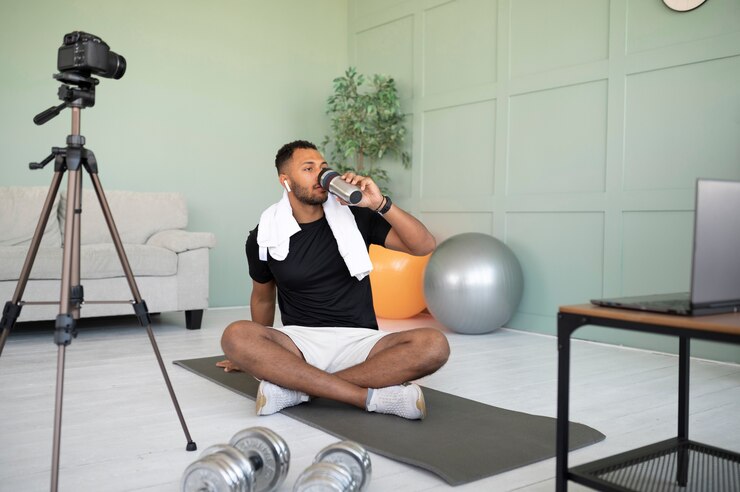
Remember, these are just examples. Adjust sets, reps, and exercises based on your fitness level and goals. Consider consulting a certified personal trainer for a personalized program.
Progression Tips for Each Exercise:
- Increase weight or resistance bands.
- Perform more sets or reps.
- Decrease rest time between sets.
- Try more challenging variations.
- Focus on mind-muscle connection and controlled movements.
By incorporating these alternatives and following these tips, you’ll be well on your way to achieving a sculpted chest, no cable machine required!
Stay tuned for the final section, where we’ll delve into the pros and cons of the high-to-low cable fly compared to its alternatives, providing a clear picture to guide your exercise choices.
High to Low Cable Fly vs. Alternatives: Weighing the Options.
Now that you’re armed with a variety of alternatives, let’s compare them to the high-to-low cable fly, highlighting their strengths and weaknesses:
High to Low Cable Fly:
Pros:
- Controlled movement: Ideal for beginners or those with joint issues.
- Constant tension: Provides continuous muscle engagement throughout the movement.
- Scalable resistance: Easily adjust the weight for progressive overload.
- Target upper chest: Good for sculpting definition.
Cons:
- Limited equipment availability: Requires access to a cable machine.
- Potentially unnatural movement: Might not translate well to real-world pushing motions.
- Can be isolating: Doesn’t engage stabilizer muscles as effectively as some alternatives.
Alternatives:
Pros:
- Greater versatility: Offer various options for different fitness levels and equipment availability.
- More functional movement: Mimic real-world pushing motions and engage stabilizer muscles.
- Bodyweight options: Accessible and require no equipment.
- Can target specific areas: Variations allow for upper, lower, or overall chest focus.
Cons:
- Steeper learning curve: Some alternatives require more coordination and balance than the cable fly.
- Progression might be challenging: Not all alternatives offer easy weight adjustments.
- Bodyweight limitations: Might not provide enough resistance for advanced lifters.
Choosing the Right Fit:
Ultimately, the “best” alternative depends on your individual needs and preferences. Consider these factors:
- Fitness level: Beginners might benefit from machines, while advanced lifters can explore challenging variations.
- Equipment availability: Choose options based on your gym membership or home equipment setup.
- Personal preference: Do you enjoy controlled movements or free weight freedom?
- Specific goals: Prioritize strength, hypertrophy, or definition with your choice.
Remember, variety is key! Incorporate different alternatives into your routine to keep your workouts engaging and challenge your muscles in diverse ways.
I am commitment to crafting compelling narratives and delivering insightful content continues to inspire and inform readers across various platforms. Explore her articles on AlternativesZone.com and FactAfterFact.com to experience a rich tapestry of knowledge and discovery. Here I Analyze and Test the products and services together with my team before we recommend them to our users. Nice Reading Here!


